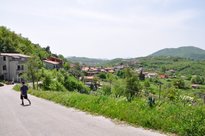 |
North of Profeti looking south towards Villa. The 15th Infantry occupied the hills at the right of the photo. On 17 October, they began a rapid
advance skirting the slopes of Mt. San Angelo to the southern slopes of Hill 446 to protect the left flank of 7th Infantry whose ultimate objective was Dragoni. |
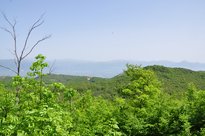 |
In the valley lies Majorano Di Monte. The hills on each side concealed numerous enemy positions protecting the valley below. All 3 Infantry
Battalions of the 7th Regiment, augmented by the 3rd BN, 15th INF,
attacked through the valley floor (right to left) and the on the hills on either side of the valley. |
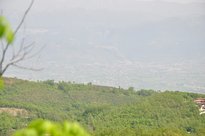 |
Majorano di Monte. 17 October 1943 was a day of carnage but by nightfall Majorano was taken - at great cost. The 7th Regiment continued the
fight (right to left in this photo) to just south of Dragoni. There, on 18 October 1943, MG Lucien Truscott, 3rd Division CO ordered the now exhausted 7th INF to halt the advance. He said they had done
more than their share. A fresh division would take Dragoni and continue the northward drive. |
 |
At my back is the southern base of Mt. San Angelo. The photo is looking southeast. Company B marched to this point from the far
hills on 17 October facing light opposition.
They were about to bear the full brunt of battle. |
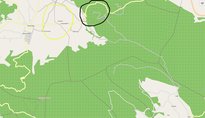 |
On 17 October 1943, Sidney Heistein and Company B marched from Cese, around the west side of Mt. San Angelo, to the base of Hill 446
facing the occasional roadblock and machine gun nest -
known in military jargon as "light opposition." Possibly unknown to the attackers, Roccaromana and Hill 446, (circled in black) was designated a major line of
resistance. Enemy forces were concentrated
west of Pietramelara (yellow circle) and in the hills to the north.
Beyond Pietramelara, to the northeast, lies the Mignano Gap and the Liri valley - the road to Rome. The delaying action at Roccaromana would buy time to complete the
Gustaf Line fortifications - and would cost Sidney Heistein his life, and that of 8 others in his company. The march from the Mignano Gap to the Gustav Line would
cost one life per yard. |
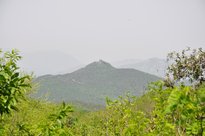 |
Looking northwest, the first glimpse of Hill 446. The tower above (at the time of our visit encased in scaffolding) was built by the
ancient Samnites, a pre-Roman tribe. The numbers assigned to hills (446 in this case) correspond to their altitude in meters. |